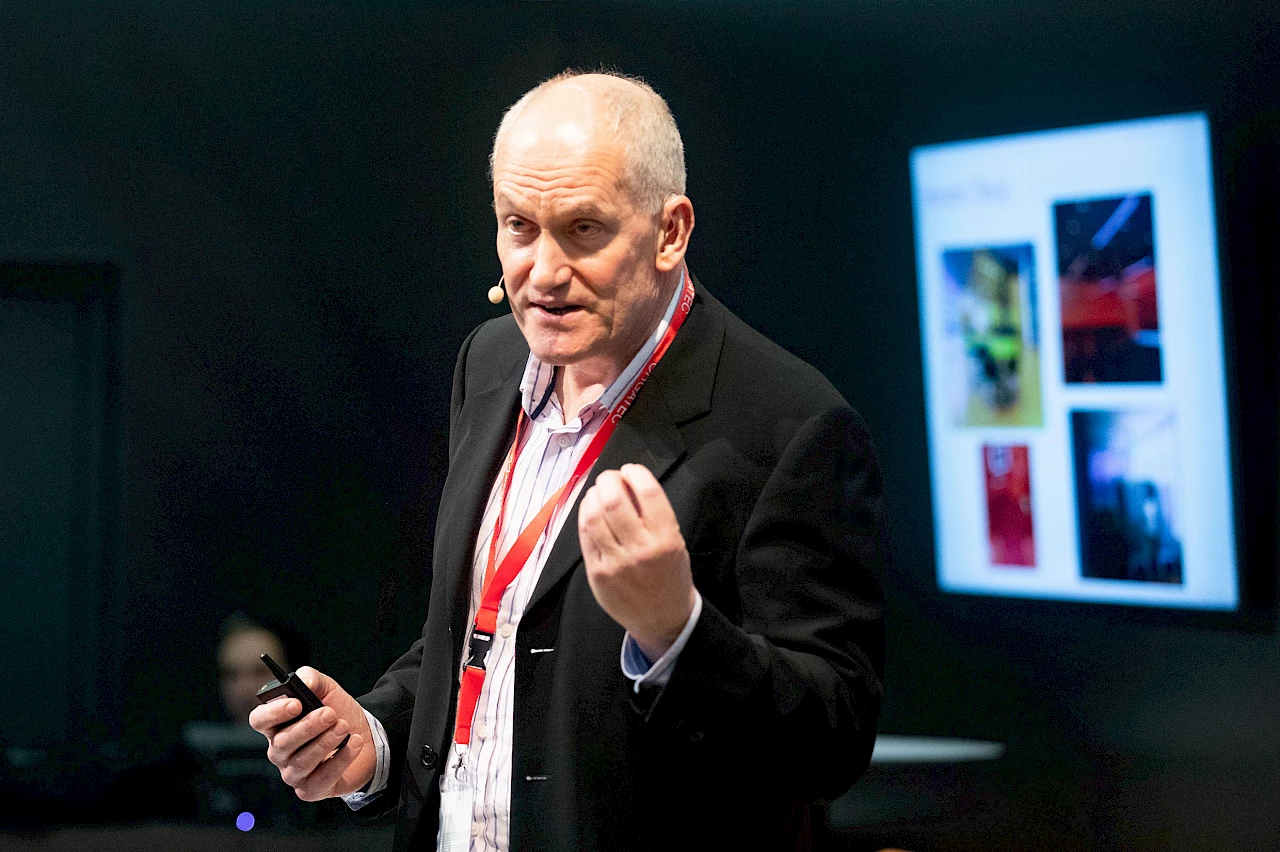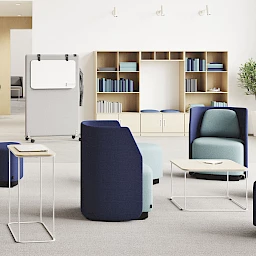Dr Craig Knight is a business transformer, a psychologist and the director of Identity Realization Ltd. (IDR), a spin-off of the University of Exeter (England). In a presentation on the IBA Forum stage during ORGATEC 2022, he shared scientific insights into the transformations that are taking place in the office world today.
The office world has rarely been characterized by as many areas of uncertainty as it is today. Hybrid work, changing work cultures, the “great resignation” trend in business and the desire to make everything return to the way it used to be—all of these factors are colliding with one another. Against this background, in his presentation Dr Craig Knight reported on new approaches to improving the performance and increasing the satisfaction of office workers.
The main features of the culture of office work stayed the same for 100 years
Knight’s introductory proposition was that until the end of 2019 the main features of the office world stayed the same as they had been 100 years ago—strict supervision by the management and not much autonomy for the employees. Moreover, the “lean office” design principle is still being implemented in up to 70 percent of offices. This type of office design, which is reduced to the minimum, is meant to boost office workers’ productivity by reducing distractions to an absolute minimum. However, this principle is seldom implemented at the managerial and decision-maker level. On the contrary, this group almost always works in beautiful rooms that are designed to promote enjoyment of the work being done, team spirit, a sense of well-being, inspiration and creativity. On this topic, Knight quotes Scott Adams, the creator of the legendary “Dilbert” cartoons:
„All of the inconveniences that make normal employees more productive are exactly the things that make managers less productive. No one knows why.”
Lean Office vs. empowered office
IIn his research Knight is interested in finding out how productivity can be influenced by the office environment. He reported on an experiment in which office workers performed the same tasks in a variety of environments.
- Lean space: an austere office without any decorative elements
- Enriched space: an office design with decorations selected for the office worker, such as plants and pictures on the walls
- Empowered space: an office design that has been selected by the office worker
- Disempowered space: an office design that was selected by the office worker but was subsequently changed
The statistics revealed that the employees worked faster in the enriched space than in the lean space, and even faster in the empowered space than in the enriched space. By contrast, the pace of work decreased in the disempowered space. The data also showed that fewer errors were made in spite of the faster pace. The level of creativity was highest in the empowered space.
But the most important result was the fact that it is possible to demonstrate a connection between the employees’ sense of well-being and their performance. In this connection, Knight pointed out his self-developed Knight-Index, which provides companies with a method for measuring and optimization.
Please also read

Less autonomy = inferior performance
In view of the fact that the pandemic is gradually coming to an end, many employers would like to have their employees return to the office. At the same time, more and more companies are setting up systems for recording the working time of employees who work from home. The companies are thereby aiming not only to comply with the obligation to record working times that was established by the European Court of Justice, but also to give employees a better overview of the work they have done and to boost their work morale. However, the results of Knight’s research tell a different story. According to these results, the infringement of the employees’ autonomy leads to a decreased sense of well-being, a higher level of stress and thus to inferior performance. Against this background, Knight calls on employers and decision-makers to trust their employees. This would mean reducing the recording of working times to the minimum that is required by court rulings and the law.
The best post-pandemic office
According to Knight, enriched workspaces—or, better yet, empowered workspaces—should become the new norm in workplace design and replace lean offices, which are still dominant, as soon as possible. On the basis of his experience, the transformation psychologist adds that even the positive effects of the empowered workspace can be further enhanced by means of the “super empowered space”. In this concept, employees have the opportunity to not only select the office design but also be actively involved in the design process. “Genuine empowerment is the affirmation of one’s identity in spatial terms,” says Knight. According to his research results, empowerment gives a further boost to office workers’ working speed, creativity and intellectual performance.
Knight emphasized that his findings regarding the connections between workplace design, identification, well-being and productivity have remained very stable over 20 years of research. He said that getting these connections right can increase employees’ sense of well-being by up to 60 per cent, commitment by 45 per cent and productivity by 31 per cent. The goal is not to have the best office design but rather to empower people, he explained.





